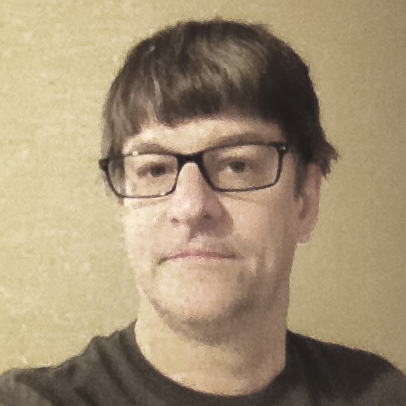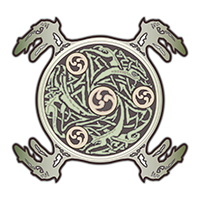I’m continuing my discussions on the writing of The Phantammeron. As I have mentioned before, I intentionally placed many mysteries and symbols in the book which were designed to foretell things in later books and connect back to unsolved mysteries in the initial creation stories of Book One.

There are several relationships in the books that were created to further character development and yet connect the reader to older themes previous to the novel and the world’s creation. For example, the reader learns later the Essence Eternal, the primary Creator of the Phantammeron world in the book, had come from a previous world but that he also was the son of the Nothingness, making “God” or the Creator a sort of fallen being, himself. This was one of many substories suggesting that relationships in the Phantammeron books would also be about opposing representations of things, contradiction, and many things born in the cosmology that have opposite sides to one another. That was the main reason they were written….to weave their designs into others through opposing forms. Thus, was planted the concept of the conflicted “Celtic fairy tale mind” as one of my fiction’s essential foundations.
For example, you will notice in Phantammeron Book One the romantic story of Ana who falls in love with Ama in the Gardens of Abrea. That formed a symbolic Adam and Eve myth representing the Garden of Eden in the Bible which is so familiar to many Westerners. But the opposite of that love story was represented by that of Agapor and the Shade, whose love is tragic and doomed upon the hellish shores of the Great Beyond – the opposing tragic love theme to Ana and Ama’s more innocent one.
Both these relationships evolve in parallel in the first book to draw the reader into the symbolic conflicts of similar but conflicting ideas about love and relationships, light and dark, marriage and conflict, freewill vs determinism, etc. The idea for me was to have a pebble dropped into two pools for the reader and watch their waves and reflections spread beyond those two opposing poles until they gently crossed. More of this type of symbology you will see as you reread the books again and again.
In the story mentioned above, you will notice that the Shade, like Ana, loses her lover in the end. And so, they are also alike, another subtle contradiction I lend to the reader. For both characters in the end become part of the Phantaian landscape itself, marrying themselves to the landscape at the end (i.e. the Shade becomes the night-time sky, Ana the Sacred Pool in the garden, etc.). The greater power of the dominant feminine principle wins here, as she is Nature personified in my books, often more so than the masculine. For these two female types, in displaying the eternal feminine of the Earth Mother of Western European folklore, though different opposing forces at work, both destroy and yet rebirth the world again at the end of the novel, preparing it for its next “phase” of life. And so, the innocent tales of love and love lost that seem to serve some laws of opposites strangely merge again to serve yet another purpose. Why would that be?
Many of my characters and stories are in fact the same yet different, layered under by more primal ideas I am trying to portray about Life, about men and women, purest versus poisoned love, and about our connection to the larger Natural world they must return to. They all have the same type of fate, same essential outcomes, and same tragic experiences in the end. My opposing characters must eventually converge around a more powerful force at work, the very Myth of Making the World and the powers behind it that drive it. For they are all driven or pre-ordained to become one part of that world, a larger plot or play who, like the reader, we sense but like them we cannot fathom in our own lives until the very end of our lives.
Opposites, yet the Same.
You will see Ana who is born from her mother An, seeking to return to her mother throughout the book, for example. And so, I used the “lost child” motif in her early tales. At the same time, you read about the Shadow who finds Anissa (yes, it’s his mother!) who births him, later saves him, and yet who ends up being one of the reasons for his death due to the promise of bringing her the dark ring. That is the opposite of Ana’s maternal experience. Again, two children with mother’s, one lost forever but loving, the other found but eternally evil. More examples of these strange opposing forces that appear different to be the same but different is Agapor seeking to find his father who is the Twilight Mist. He seeks him first with rage and later with love, yet never finding him, only the monsters he created. The Shadow seeks his loving and regretful father and finds him, but slays him. The latter was an intentional antipode to Agapor’s experience.
Yet another example of strange opposites is the Shade and Shadow who are sister and brother. They, too, have completely opposite relationships to Agapor. The Shade falls in love with Agapor and serves him actively while the Shadow passively seeks to undermine Agapor through his hidden hatred of his enslaver. Again, opposite forces at work as the Shade and Shadow are followed through the plot. As ‘hero-twin’ siblings they work to undermine each other, and it’s those opposing passive forces that manipulate the protagonist and drive his bigger struggles. Interestingly, we also have Agapor, father of Ana, slaying the Shadow when she releases her waters into the world, while Agapor frees the Shade from his love when he jumps into the Great Beyond. Again, opposing views of love’s eternal sacrifice are at work in my books, too.
You will see the relationship Ana and Ama have to the Chieftain Trees is the opposite Agapor and his evil ring have to the Connewe the evil witch-hazels who are brothers to the Chieftain Trees, yet enslaved to the spirit held in the dark ring Agapor holds. One connects through passive love the other through forceful will. The symbols go deeper from there, as in the Sacred Pool in the Garden of Abrea and its dark, vile bubbling counterpart in the pit of the world Ana discovers at the end.
Part of the fun of writing this web of relationships is the fact that in the Phantammeron is the duality I wanted to convey….that conflicting morass found in modern life that is not black and white, and yet it strangely is. Conflicting agendas often control Modern people today more than any other era (many call ourselves Christians yet use money to further our selfish American political agendas, for example) filled with contradiction and the harsh antipodes within ourselves and the people that live around us.
This idea of opposites fills the Celtic fairy tale and the Western European Mind. We have for millennia opposed ourselves with our fatalistic views, driven by our origins in a Land of Fire and Ice, observing the cyclical movements Sun and Moon, and the eternal drama of the seasons of light and dark. These soulful conflicts inside Western peoples drives all of Western Culture today. I wanted to make sure that conflict was embedded in every human relationship, story, and myth throughout my books, driving ever greater the many hidden mysteries I have laid out for you to find in my work and in yourselves.
And yet, behind these strange truths hides even larger themes and ideas yet to be revealed in my novels…from our trapped, deterministic futures yet freewill bound lives, to the eternal predominance of love in all Human striving, to the eternal recurrence of the Universe and the soul that forever reinvents itself in some strange dance of death and rebirth and death again.
These ideas and many more are in the domain of every fantasy fiction writer if they but choose to write in the purposeful realm of mythopoeia.
– the Author



